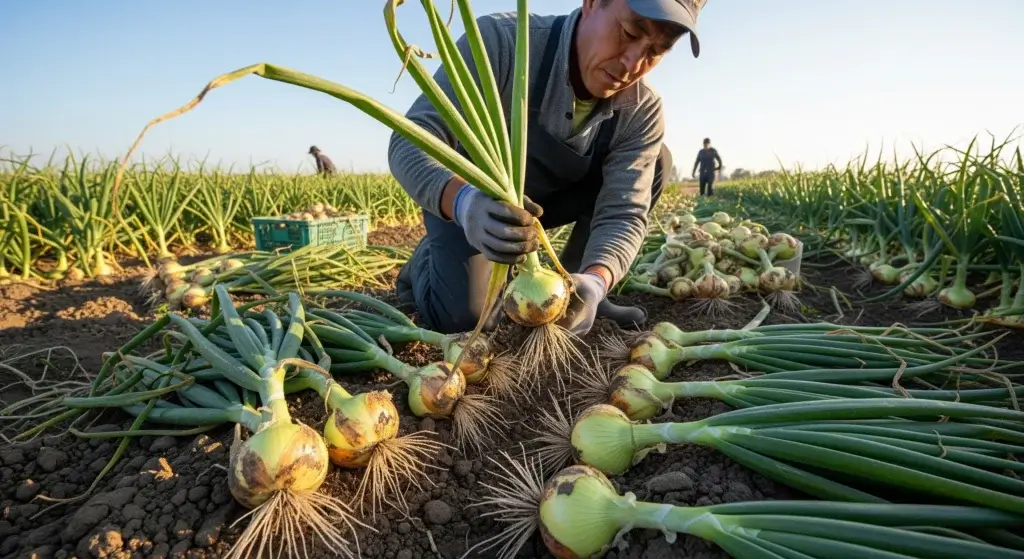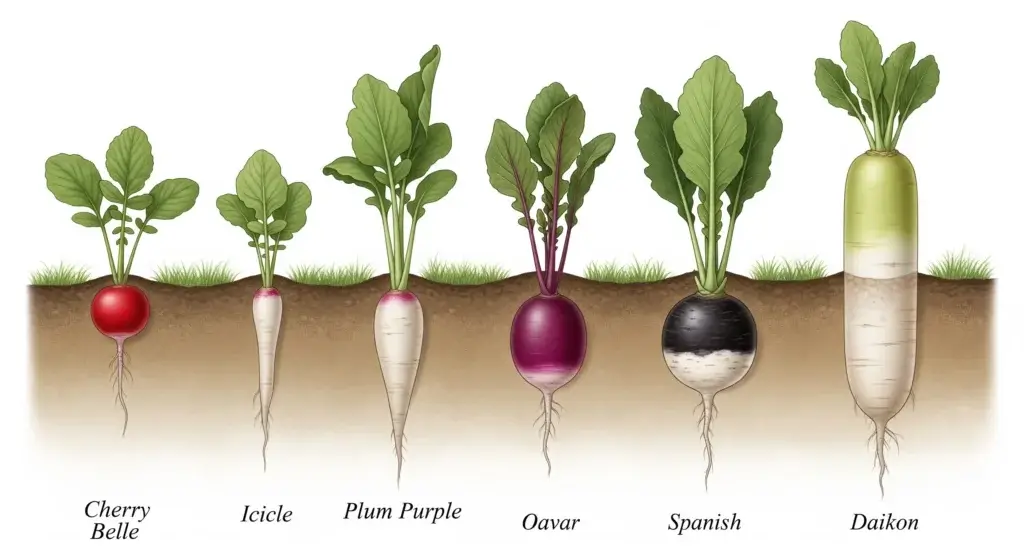
Cabbage is a staple in many gardens, providing a crunchy, flavorful addition to salads, slaws, and sauerkraut.
However, growing large, healthy cabbage heads can be a challenge, especially for beginners.
In this article, we’ll explore the key factors that contribute to maximizing cabbage head size, from choosing the right variety to nurturing your plants and harvesting at the right time.
Choosing the Right Cabbage Variety
When it comes to growing large cabbage heads, selecting the right variety is crucial.
Look for varieties known for producing large heads, such as Napa cabbage and Savoy cabbage.
When choosing a variety, consider factors like maturity time, spacing requirements, and suitability for your climate.
For example, some varieties may require more space or have a longer maturity period than others.
Planting for Success
Achieving success in cabbage planting requires attention to several key factors.
Here’s a detailed guide to help you plant your cabbage crop effectively:
Planting time
Cabbages thrive in cool weather, so it’s best to plant them during the cool season, typically 8 to 10 weeks before the last frost date in your region.
This timing allows the plants to mature before the heat of summer sets in, which can cause bolting or premature flowering.
If you’re starting seeds indoors, begin sowing them 4 to 6 weeks before the last frost date.
Transplant the seedlings outdoors when they have developed 2 to 3 sets of leaves, ensuring they are sturdy enough to withstand outdoor conditions.
Seed Starting vs. Transplanting
Starting cabbage seeds indoors can give you a head start on the growing season and allow for more controlled conditions during germination.
However, it’s essential to harden off seedlings before transplanting them outside to acclimate them to outdoor conditions gradually.
Alternatively, you can directly transplant seedlings into the garden, provided they are healthy and disease-free.
Choose seedlings with robust stems and vibrant foliage for optimal growth and productivity.
Planting location
Select a planting location that receives full sun and has well-drained soil.
Cabbages prefer slightly acidic to neutral soil with a pH ranging from 6.0 to 7.0.
Avoid areas prone to waterlogging or where soil compaction is an issue, as this can inhibit root growth and lead to poor plant development.
Amending the soil with organic matter, such as compost or aged manure, can improve soil structure and fertility, creating an optimal growing environment for cabbages.
Spacing
Proper spacing is crucial for promoting healthy cabbage growth and maximizing head size.
Plant cabbage varieties at the recommended spacing, typically 18 to 24 inches apart.
This spacing allows for adequate air circulation around the plants, reducing the risk of disease and ensuring optimal nutrient uptake.
Avoid overcrowding, as this can lead to competition for resources and smaller head formation.

Nurturing Your Cabbages
Nurturing your cabbage plants involves several essential practices to ensure their health and productivity.
Let’s delve into the details:
Soil preparation
Prepare your soil thoroughly before planting by amending it with compost or aged manure.
These organic materials enrich the soil with essential nutrients and improve its drainage, creating an optimal growing environment for cabbage plants.
Cabbages prefer fertile, well-draining soil that’s free of rocks and debris, allowing their roots to penetrate deeply and access nutrients efficiently.
Watering
Proper watering is critical for the development of healthy cabbage plants.
Consistent moisture is essential, but it’s crucial to avoid waterlogging, as this can lead to root rot and other moisture-related issues.
Aim to provide your cabbages with approximately 1 inch of water per week, either through rainfall or irrigation.
Monitor soil moisture levels regularly and adjust your watering schedule as needed to ensure optimal hydration for your plants.
Fertilization
Cabbage plants benefit from regular fertilization during the growing season to support their growth and development.
Apply a balanced fertilizer or aged compost tea to provide essential nutrients like nitrogen, phosphorus, and potassium.
However, it’s essential to avoid overfertilizing, as this can lead to excessive vegetative growth and reduce the quality of cabbage heads.
Pest management
Keep a close eye on your cabbage plants for signs of common pests, such as aphids and caterpillars, which can damage foliage and reduce yields.
Implement organic pest management methods, such as spraying with neem oil or insecticidal soap, to control infestations effectively.
These natural remedies target pests while minimizing harm to beneficial insects and the environment.

Maximizing Head Size
To maximize the size and quality of your cabbage heads, attention to specific practices throughout the growing season is crucial.
Let’s delve into the details of how you can achieve optimal results:
Hilling
As your cabbage plants mature, hilling soil around the base can encourage head formation.
This technique involves gently mounding soil around the stem of the plant, which helps direct the plant’s energy towards head growth.
Weed control
Regular weeding is essential to prevent competition for nutrients and water, which can hinder cabbage head growth.
Weeds not only compete with cabbage plants for resources but can also provide shelter for pests and diseases.
Remove weeds promptly by hand or with a shallow cultivator to maintain a clean and weed-free growing environment.
Sunlight exposure
Adequate sunlight is critical for optimal photosynthesis and head development in cabbage plants.
Ensure your cabbages receive at least 6 hours of direct sunlight each day by planting them in a sunny location with minimal shading.
Proper sunlight exposure stimulates healthy growth and ensures the formation of dense and compact cabbage heads.
Harvesting for Success
Ensuring a successful cabbage harvest involves understanding the signs of maturity and employing proper harvesting techniques.
Let’s explore these aspects in more detail:
Signs of maturity
When determining if cabbage heads are ready for harvest, several indicators can guide your decision.
Firstly, assess the size of the cabbage head; mature heads are typically large and compact.
Additionally, gently press on the cabbage head to check for firmness; mature heads should feel solid and firm to the touch.
Lastly, examine the color of the cabbage head; mature heads often display a vibrant green hue.
Harvesting techniques
Harvesting cabbage heads requires care and precision to avoid damaging the plant and encourage regrowth for future harvests.
To harvest cabbage heads, use a sharp knife or garden shears to cut the head at the base of the plant, leaving a small portion of the stem intact.
This method allows for a clean cut without injuring the plant.

Conclusion
Growing large, healthy cabbage heads requires attention to detail, from choosing the right variety to nurturing your plants and harvesting at the right time.
By following these tips, you can enjoy a bountiful harvest of delicious, crunchy cabbages.
Remember to choose varieties known for producing large heads, plant at the right time, and provide optimal growing conditions.
With proper care, you’ll be enjoying your homegrown cabbages in no time.
FAQs
Choose a variety known for producing large heads, plant at the right time, provide optimal growing conditions, and nurture your plants with consistent watering and fertilization.
Check for signs of maturity by looking for size, firmness, and head color. Cabbage heads should be firm, compact, and have a vibrant green color.
Yes, cabbages can be grown in containers, but ensure they’re at least 12 inches deep and have good drainage. Choose a variety that’s compact or dwarf and provide support as the plant grows.



